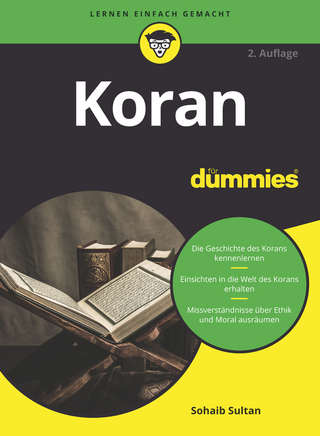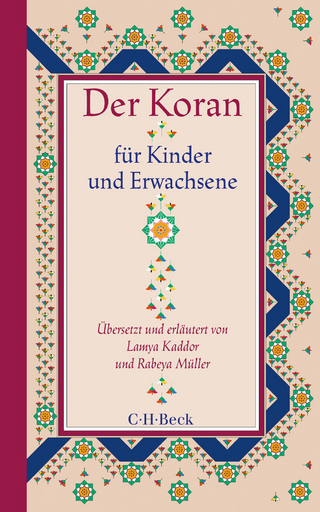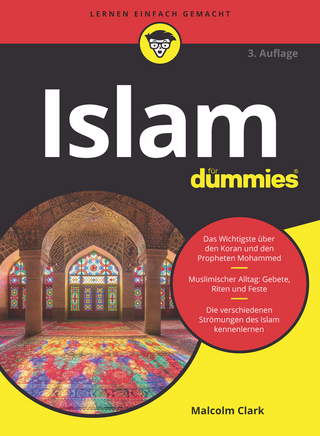
Further Studies in Islamic Painting
Pindar Press (Verlag)
978-1-899828-50-0 (ISBN)
- Titel nicht im Sortiment
- Artikel merken
The focal point of this volume is clearly the new edition of the 1968 exhibition-catalogue,The Classical Style in Islamic Painting: this was a study on the origin of Timurid painting and its impact on other royal painting ateliers in the rest of the Muslim world. At that date, the author believed that the style developed in the atelier of Baysunghur Mirza ibn Shah Rukh, Timur’s grandson and one of the great bibliophiles of the age, was considered a “classical” achievement by his contemporaries and the princely bibliophiles of the next two generations. Its apparent perfection led these princes and their artists to emulate its qualities and mannerisms for over two centuries.
Written as a catalogue accompanying an exhibition at the Pierpont Morgan Library in New York in 1968, the selection of works was restrained both by the limits of material then available, and by the fact that relatively little was then known about the bibliophile endeavours of Baysunghur’s cousin Iskandar Sultan ibn ‘Umar Shaykh. As we know now, Iskandar matched, and exceeded in many ways, the achievements of Baysunghur, laying the foundation upon which much of what Baysunghur achieved was based. Taking full advantage of the materials from Iskandar’s atelier which have become available in research over the last thirty years, the original text of ‘The Classical Style’ has been rewritten for publication here. No longer restrained by the framework of an exhibition, it has been largely illustrated with new material. While the original concept remains basically unaltered, his new study shifts the focus slightly, taking into account the earlier sources that illuminate the bibliophile achievement of the period. The Classical Style in Islamic Painting has been out of print for over 25 years, so this updated version should be particularly welcome.
A second major study included in this volume focuses on Baysunghur, examining two manuscripts of the renowned stories of the two jackals, Kalilah and Dimnah, at the court of the Lion King; they were made for the prince within two years of each other. All the paintings in these exquisite codices are illustrated. Comparison between what would appear to be a pre-Baysunghur version with that made in the prince’s own atelier leads to new insights into the problems that still surround the history of painting in that period. A third study tackles the extraordinary set of paintings probably produced in the late 19th century that are based on Baysunghur’s famous Shah-namah completed in Herat in 1431.
Lastly, the studies dealing with Ottoman Turkish painting range from problems of the identification of the earliest Ottoman style at the end of the 15th century, to the reaction of the Ottoman world to the Kalilah wa Dimnah stories, and the realistic contemporary interpretation of the ancient tradition of Firdausi’s Shah-namah.
Timurid Painting: Studien zur Malerei der Timuriden, I: Zur Frühstufe von Herat
Two Kalilah wa Dimnah Codices made for Baysunghur Mirza: The Concept of the ‘Classical Style’ Reconsidered
The Classical Style in Islamic Painting. The Early School of Herat and its Impact on Islamic Painting in the late 15th, the 16th and the 17th Centuries
The Spencer and the Gulestan Shah-namah
Ottoman Painting: The Date of the Venice Iskandar-nama
Two Paintings in a Copy of the Sulayman-nama in the Chester Beatty Library
Some Observations Concerning the Ottoman Illustrated Manuscripts of the Kalilah wa Dimnah:
Ali Celebi’s Humayun-name
Four Pages from a Turkish 16th-century Shah-nama in the collection of the Metropolitan Museum of Art in New York
Additional Notes
Index
| Erscheint lt. Verlag | 31.12.2025 |
|---|---|
| Zusatzinfo | 405 illus. |
| Verlagsort | London |
| Sprache | englisch |
| Maße | 170 x 240 mm |
| Themenwelt | Kunst / Musik / Theater ► Kunstgeschichte / Kunststile |
| Kunst / Musik / Theater ► Malerei / Plastik | |
| Geisteswissenschaften ► Geschichte | |
| Geisteswissenschaften ► Religion / Theologie ► Islam | |
| Sozialwissenschaften ► Soziologie | |
| Technik ► Architektur | |
| ISBN-10 | 1-899828-50-8 / 1899828508 |
| ISBN-13 | 978-1-899828-50-0 / 9781899828500 |
| Zustand | Neuware |
| Haben Sie eine Frage zum Produkt? |
aus dem Bereich


